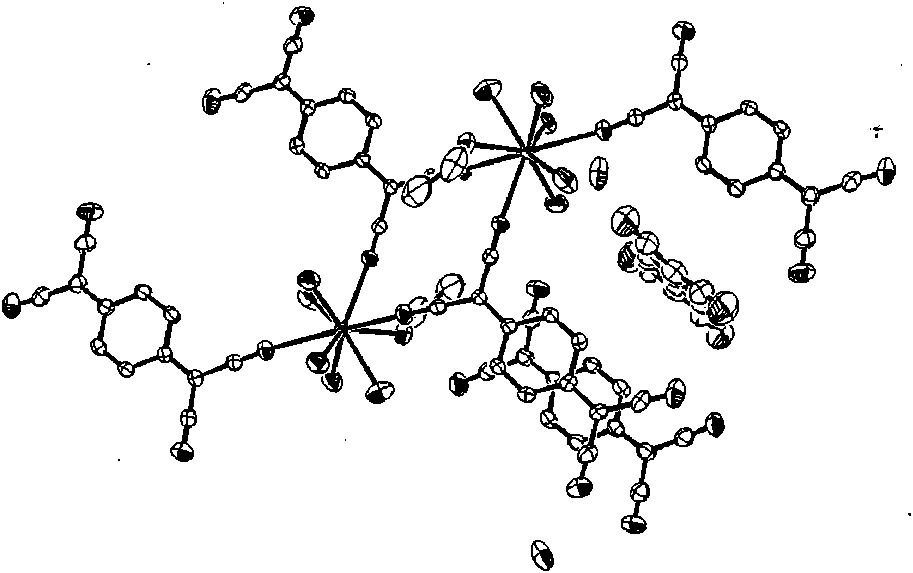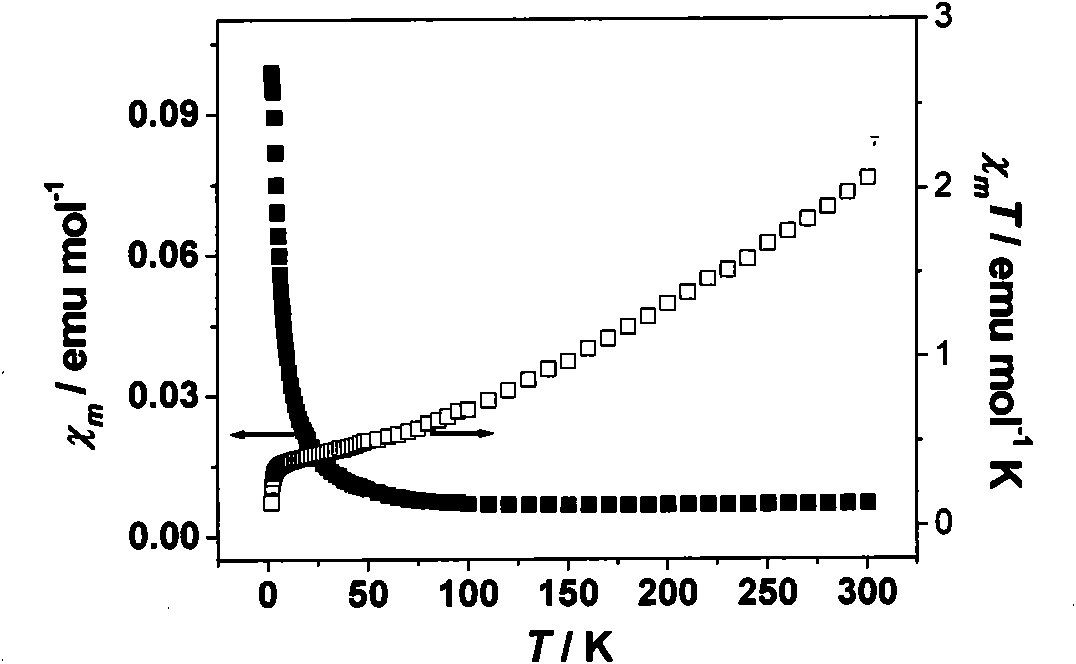Tetracyanoquinodimethane rare earth complex and synthetic method and application thereof
A technology of benzoquinodimethane and rare earth complexes, which is applied in the field of tetracyano-p-benzoquinodimethane TCNQ rare earth complexes and their synthesis, and can solve the problems of rare rare earth metals and the like
- Summary
- Abstract
- Description
- Claims
- Application Information
AI Technical Summary
Problems solved by technology
Method used
Image
Examples
Embodiment 1
[0030] Synthesis and Structure of TCNQ Rare Earth Complex Ln(TCNQ)
[0031] In the following reaction equation, LnCl3·nH2O and Li(TCNQ) are the reaction raw materials, methanol, ethanol and water are the reaction solvents, and Ln(TCNQ) is the reaction product. Under the protection of nitrogen, in the Schlenk tube, add the deoxygenated methanol solution or deoxyethanol solution of LnCl3 nH2O dropwise along the wall of the Schlenk tube to the upper layer of the deoxygenated double-distilled aqueous solution of LiTCNQ, seal and place the Schlenk tube, TCNQ rare earth complex Ln(TCNQ) was synthesized by slow heterogeneous solution diffusion reaction of LnCl3·nH2O deoxygenated methanol solution or deoxyethanol solution to deoxygenated double-distilled aqueous solution of LiTCNQ.
[0032] The synthetic method of described tetracyano-p-benzoquinone dimethane rare earth complex, described Ln is La lanthanum, Ce cerium, Pr praseodymium, Nd neodymium, Sm samarium, Eu europium, Gd gadoli...
Embodiment 2
[0035] Structure of TCNQ Rare Earth Complex Ln(TCNQ)
[0036] Single crystal X-ray diffraction analysis shows that Ln(TCNQ) is an ion-pair compound with two types of molecular structures, one is zero-dimensional dimeric molecular structure, and the other is zero-dimensional mononuclear molecular structure. attached figure 1 And attached figure 2 Two representative molecular structures of Ln(TCNQ) are given respectively.
Embodiment 3
[0038] Molecular Magnetic Properties of TCNQ Rare Earth Complex Ln(TCNQ)
[0039] The DC magnetization curve of La(TCNQ) (attached image 3 ) shows that the π-π antiferromagnetic interaction between TCNQ radical anions exists in the series of complexes Ln(TCNQ). DC magnetization curves of Pr(TCNQ), Dy(TCNQ) and Er(TCNQ) with variable temperature (attached Figure 4 ) shows that the molecular magnetism of the three complexes is similar, that is, as the temperature decreases, the thermal extinction of the Stark (Stark) energy level of the trivalent rare earth ion in the complex and the π-π reaction between the TCNQ radical anions Together, the ferromagnetic interactions lead to a decrease in the x mT value.
[0040] The molecular magnetic properties of Gd(TCNQ) changed obviously before and after the solvent molecules were removed in vacuum at high temperature. attached Figure 5 It shows that before Gd(TCNQ) is desolvated, there is antiferromagnetic interaction between the s...
PUM
 Login to View More
Login to View More Abstract
Description
Claims
Application Information
 Login to View More
Login to View More - R&D
- Intellectual Property
- Life Sciences
- Materials
- Tech Scout
- Unparalleled Data Quality
- Higher Quality Content
- 60% Fewer Hallucinations
Browse by: Latest US Patents, China's latest patents, Technical Efficacy Thesaurus, Application Domain, Technology Topic, Popular Technical Reports.
© 2025 PatSnap. All rights reserved.Legal|Privacy policy|Modern Slavery Act Transparency Statement|Sitemap|About US| Contact US: help@patsnap.com



